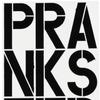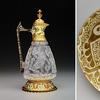ANNE RYAN: THE BLACK-LINE WOODCUT, ON VIEW THROUGH SATURDAY
- NEW YORK, New York
- /
- November 16, 2011
Anne Ryan (1889-1954) made woodcuts for three or four years starting in 1945. In 1941, she began studying printmaking with Stanley William Hayter at the New York home of Atelier 17, under the auspices of The New School. She learned woodcut techniques from Louis Schanker, who also taught at the New School.
The whit--line woodcut technique, as developed by B.J.O. Nordfeldt, in Provincetown, Massachusetts, during the First World War, simplified the printing of color relief prints. An image was drawn on a piece of soft pine and these lines were then cut away, making grooves. The primary advantage was that these lines isolated different colors and made it possible to place several inks on the block at once without the wet inks touching. This drastically reduced the number of blocks needed to make an image, sometimes to even a single one. Ryan used her fingers as well as more traditional rollers to apply ink or oil paint onto the matrix. The dampened paper could be attached or folded under the block to ensure registration of colors.
Ryan was a master at layering inks and transferring the ink to the paper by hand rubbing; each impression is essentially a monoprint. Further, she used black paper that changed the white line of the Provincetown prints to black. In the finished images these read as drawn lines and also outlined shapes and areas. Where the paper showed through the pigments it added an additional richness to the color. The black sheets themselves were originally used to wrap photographic papers in stacks of 10 x 8 x 1 inches. Ryan ironed and sometimes patched them. The creases form lines of their own and are intrinsic to a particular impression.
In the catalogue for the exhibition A Spectrum of Innovation, Color Printing in America 1890-1960, David Acton wrote that in printing on black paper Ryan’s “Colors achieved a saturation and luminosity quite different from those caused by white papers. In Ryan’s prints, the black ground read through the thin layers of ink, and an organic mottled texture was effectively achieved. This extraordinary luminosity and the softness and subtlety of hue are what distinguish these woodcuts.”
Although a few prints are totally abstract, Ryan explored a full repertoire of themes in woodcut, while similar compositions might reveal vases on a table, women under a proscenium arch or on a beach, or boulders on a gently curving planet. Within a single subject space and light changed from one impression to another.
The career of Anne Ryan dates from 1939 to 1953. She made woodcuts from 1945 to 1948. It is a staggering accomplishment.
The entire show may been seen under Exhibitions at WWW.SUSANTELLERGALLERY.COM.
Contact:
Susan TellerSusan Teller Gallery
212-941-7335
info@susantellergallery.com

100x100_n.jpg)



100x100_c.jpg)










